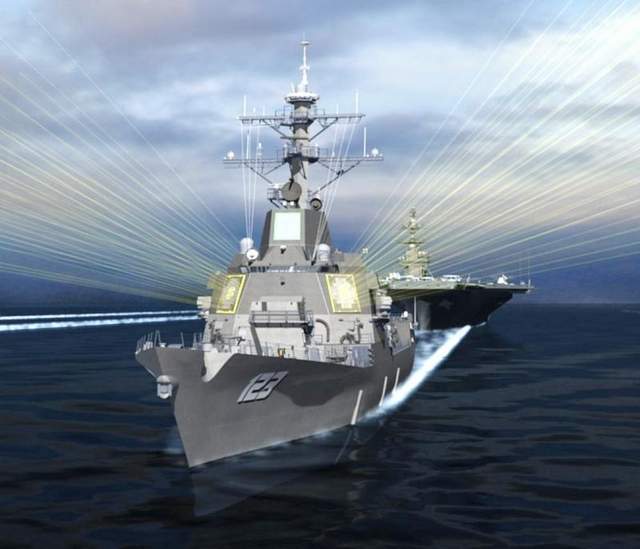
ARLINGTON, Va. — The Navy’s vision of what its next large surface combatant will look like still remains unclear, but that future hull will almost certainly run the DDG-51 Flight III’s combat system, the Program Executive Officer for Ships said today.
Rear Adm. William Galinis said today that the PEO, along with the surface warfare directorate at the Pentagon and other stakeholders, is “still in the very very early stages of concept development” on the large combatant piece of the Future Surface Combatant family of systems.
Despite the Navy’s preference towards using mature parent designs for new programs – like the ongoing frigate competition’s requirement to have a parent design, and leveraging the San Antonio-class LPD design for the LX(R) program – Galinis said no decisions have been made as to whether the Navy would want to use an existing design for its next large combatant, or if a useful design even exists.
What is clear at this point, though, is that “the initial concepts start with a DDG-51 Flight III combat system, and we build off of that. Probably bringing in a new [hull, mechanical and electrical] infrastructure and a new power architecture to support that combat system.”
Speaking at a Navy League breakfast this morning, the rear admiral said the decision to start with the Flight III combat system, which includes the new AN/SPY-6(V) Air and Missile Defense Radar (AMDR), was based on how technology and global threats are expected to evolve. The combat system could support future weapons such as laser guns, which Galinis said was where technology is headed, though he stopped short of saying definitively that the next large surface combatant would include directed energy technology.
As for the Arleigh Burke-class hull, Galinis said some upgrades were made in the Flight III design – improved damage stability in case the ship were to take a hit, for example – but the Navy isn’t sure how much more that hull can do before hitting its architectural limits. For example, the Navy has tested a laser weapon system on an old amphibious ship that was converted into an afloat staging base, and is set to test the next iteration of the laser weapon on a new amphib, but it declined to use a destroyer to test the next laser gun after evaluating ship classes on their cooling, power, air conditioning, space and weight margins.
“Do we use the DDG-51 hull form and maybe expand that? Do we go with a new hull form? Power architecture is a key part of this, again, as we start thinking about future combat systems, directed energy systems. How does that play into it? So those are the conversations that we’re having right now on the requirements side,” Galinis said.
The service is still wrestling with some fundamental questions ahead of beginning industry engagement, which may happen as early as later this year: “can we stay with the more traditional mechanical drive system with larger generators, or do we really make that transition to an integrated electric plant? And then at some point probably bring in energy storage magazines of some sort to support directed energy weapons?”
The Future Surface Combatant program will include a large combatant – like a cruiser or destroyer, though the Navy is being careful not to use either label for this upcoming ship – a small combatant that would replace the Littoral Combat Ship and frigate, an unmanned surface ship, and now an optionally unmanned ship. PEO Ships will oversee the development and acquisition of the large combatant, and PEO Unmanned and Small Combatants (formerly PEO LCS) will handle the other three.
The Future Surface Combatant initial capabilities document has been signed out by Navy leadership and is pending Joint Staff approval, Galinis said.





